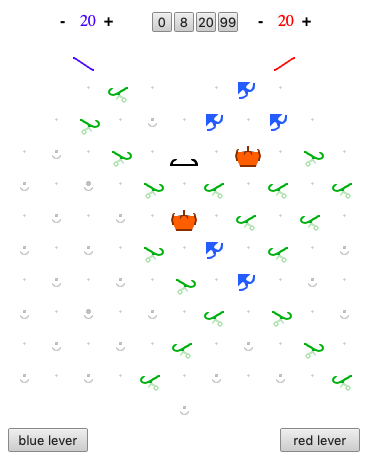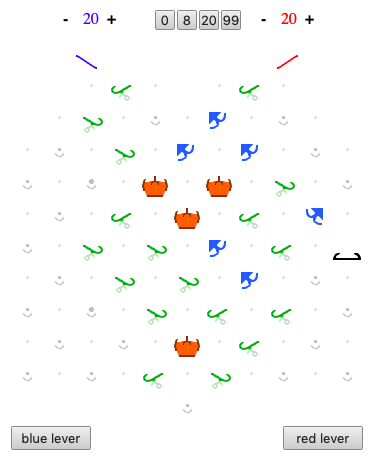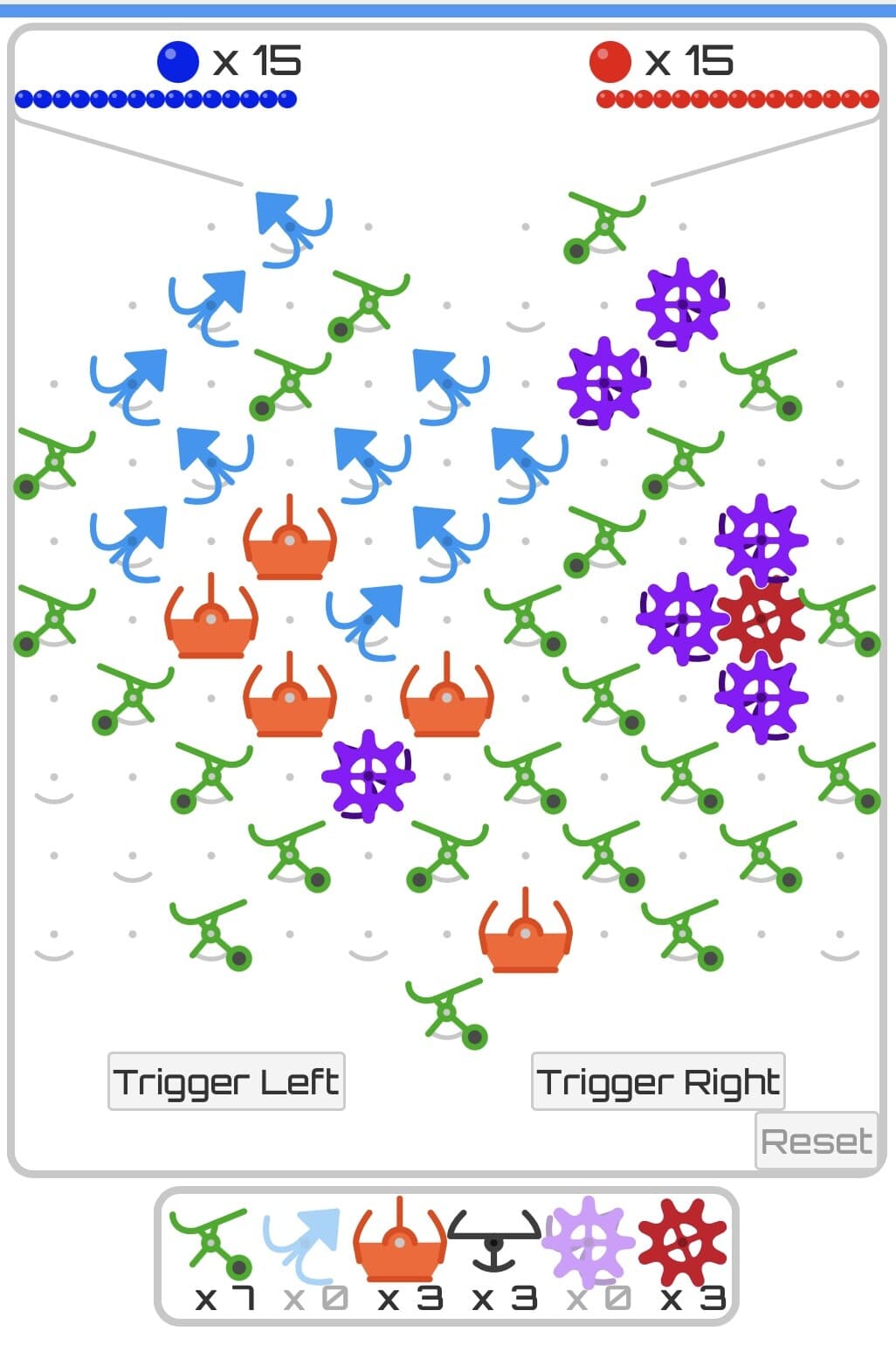Using just board and pieces as it ships, release 1 blue, 1 red, 2 blue, 1 red, 3 blue, 1 red, 4 blue, 1 red, … n blue, 1 red. So output as it appears on output ramp looks like:
. . . . bbbbrbbbrbbrb
What is the highest that you can count to in this manner?
Whatever your solution, it can’t count arbitrarily high - since a simple argument shows that you cannot continue the pattern indefinitely without more and more pieces and board space.
But, do you have a structure and approach that is systematic enough that you could count arbitrarily high if you had more parts and more board space?
Addendum: I was able to count to 3 here. But after getting to three, it continues with some extra balls before repeating, so the repeating pattern looks like this: rbbbrbbrbbbrbbrb. It would be nice if I could repeat just the part that counts to three (i.e., rbbbrbbrb). Can anybody get a count up to four?




